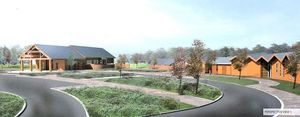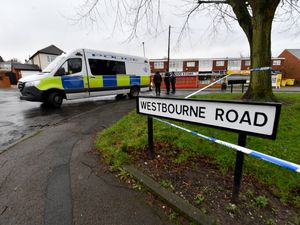Controversial plans for two new crematoriums near Wolverhampton approved on appeal
Controversial plans to build two crematoriums on the outskirts of Wolverhampton have been given the green light by the Secretary of State.

Plans for the sites in Broad Lane, Essington, and Holyhead Road, in Wergs, have been in the pipeline for years but a string of legal challenges have forced proposals to be put on hold.
A week-long public inquiry at South Staffordshire Council took place in January 2019, to determine if either of the planning proposals should be given the go-ahead.
But it was announced on Thursday they have both been allowed on appeal. The Secretary of State determined the appeals following the quashing of a previous appeal relating to both crematorium plans.
In both cases, the harm to the green belt was outweighed by the need for the new facilities, with the minister concluding that there is an overall shortage of facilities across the West Midlands conurbation – which is only likely to get worse.
Leading consultants Pegasus Group provided expert planning, landscape and heritage witnesses on behalf of Westerleigh Group Ltd for their crematorium proposal at Broad Lane, Essington.
Remembrance
The development proposed is for crematorium with ancillary book of remembrance building, floral tribute area, memorial areas, garden of remembrance and associated parking and infrastructure.
Hanna Mawson, director with Pegasus, said: “As part of the team led by Tony Bateman (planning), Jeremy Peachey (landscape) and Gail Stoten (heritage), we demonstrated the need for our client’s crematorium not just now but identified increasing pressure on facilities in the wider area into the future.”
Tony Bateman, managing director of Pegasus Group said: “This was a challenging project, particularly as during the lead up to the inquiry a crematorium in neighbouring authority Cannock Chase received consent and we therefore had to respond to changing circumstances.
"Ultimately, however, both consents being granted on appeal is good news, as they will provide modern facilities, offering choice of location and environment, to meet the needs of communities and improve mourner experiences.”
Following the public inquiry, the planning inspector in his report to the Secretary of State concluded that there is a quantitative need for both appeals to relieve pressure on existing crematoria in the future and that only by granting permissions now will that need be met in a timely fashion.
In terms of the quality of experience, the inspector considered that many of the existing crematoria in the region are ageing, in need of investment and updating, and at or reaching capacity and also that this will only get worse until rival facilities offer competition and so drive investment. As such, the Secretary of State agreed that existing crematoria do not serve different parts of the community as well as they ought to.
Overall, the Secretary of State identified there was substantial quantitative and qualitative need for both proposals, which he gave significant weight, and that this need amounts to very special circumstances, which weighed in favour of allowing the proposals in the green belt.


